The fifth instalment of Rebellion’s sniper/third-person action franchise heads to France in 1944, as the Allies prepare to land and kick out the occupying Nazis. We got our hands on one of its missions for preview purposes.
Rebellion’s Sniper Elite franchise has quietly become something of an institution: it’s 17 years since its first outing, on the PlayStation 2 and original Xbox, and in that period, the Oxford developer/publisher has given it plenty of time to improve organically, while remaining true to its blueprint of third-person action mixed with sniping, against a backdrop of World War II.
In that period, it has acquired a sizeable cult following, and it’s about to make its latest comeback, in the form of Sniper Elite – due for release on PlayStation 4 and 5, Xbox One and Series X and PC on May 26. We managed to get enough hands-on time with the game to preview it – streaming it to a PC via the Parsec system.
New features in Sniper Elite 5
Before we jumped into the hands-on session, various members of the development team talked us through what is new for the fifth iteration. Improvements include an all-new weapon customisation system, which uses workbenches to let you upgrade every element – including the likes of magazines, barrels and sights – of all the weaponry in the game, which is otherwise totally authentic to what was available to the Allies and Axis in WWII.
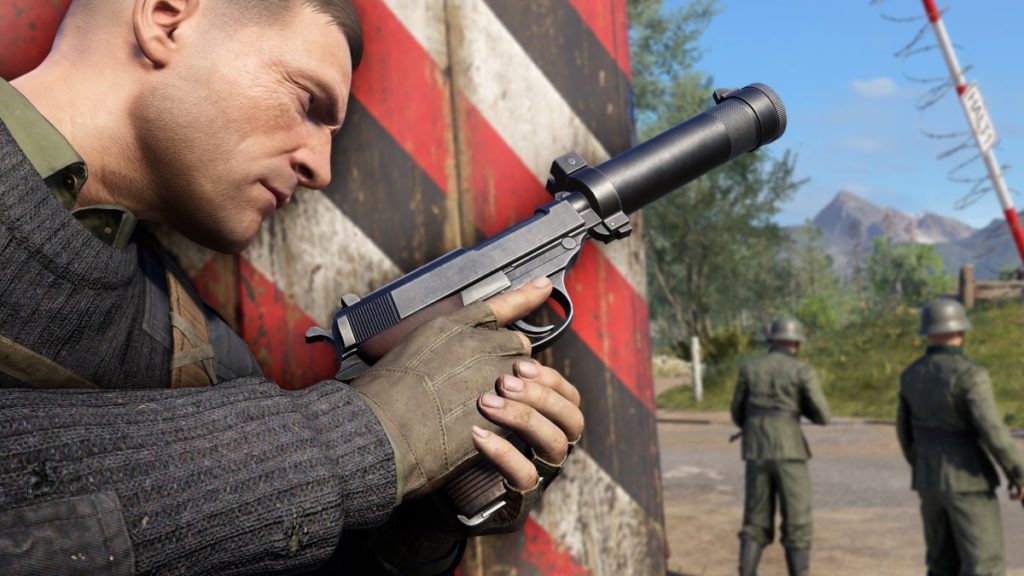
Sniper Elite 5 will also be the first game in the series in which you can enter a first-person view while using weapons other than a sniper rifle: it’s now possible to aim down the sights of all guns in the game, although you can still fire them in third-person mode, too. And Rebellion was keen to emphasise that it has worked hard on authenticity, via collaborations with institutions like the Imperial War Museum, and by reconstructing real-life locations using advanced techniques like photogrammetry.
France in 1944
Rebellion also provided an outline of Sniper Elite 5’s storyline. As usual, you control Karl Fairburne, elite soldier with the US Rangers, sniper extraordinaire and pretty much a one-man army. The game’s events take place in France in 1944, on a timeline which charts events before and after D-Day. The action kicks off with Fairburne engaged in covert activities aimed at sabotaging the Nazis’ Atlantikwall sea-wall fortifications on the Brittany coast, before he locks horns with the game’s baddie, SS Obergruppenfuhrer Abelard Moller, who is in charge of a secret project entitled Operation Kraken.
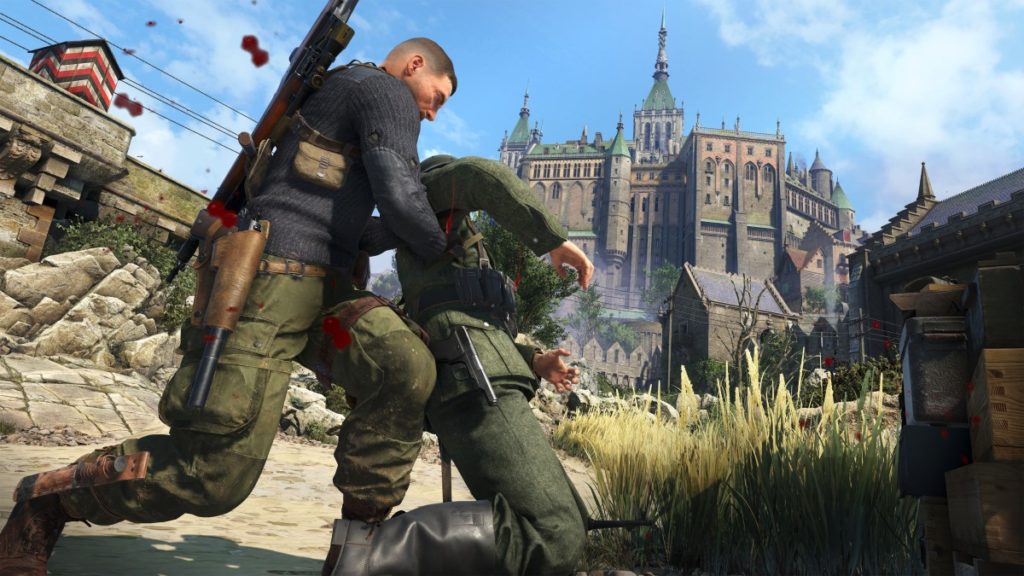
Rebellion also revealed that Sniper Elite 5 supports drop-in, drop-out two-player co-op play for the whole of the campaign: players will be able to request assistance from a co-op companion if they get stuck, or can play the whole campaign with a companion if they want. There’s a new mode called Invasion, which is Player versus Player (PvP) and allows another player to drop in on the Axis side, and invade your single-player campaign. Plus there will be at least two multiplayer modes – one 16-player free-for-all, and another called Survival, in which two groups of three players take each other on.
Hands on with Occupied Residence
The gameplay we were allowed to taste for preview purposes was restricted to just one of the game’s missions – entitled Occupied Residence, it appeared to be the second mission in the single-player campaign. Although time restrictions were sufficiently loose that we eventually managed to play through it twice.
After being invited to tweak our loadout before starting the mission (we opted to stick with the default sniper rifle and submachine gun, but picked a silenced handgun), we were greeted by a cut-scene in a forest clearing. There, Fairburne, in the company of an SOE officer, hooked up with the local French Resistance, who informed us that the person responsible for a series of recent local atrocities was Abelard Moller, his soon-to-be-nemesis.
Moller had commandeered the local Chateau de Berengar to use as his HQ, although he was elsewhere currently, and he was rumoured to be in charge of a secret, potentially devastating Nazi war project. So Fairburne was detailed to break into the chateau, gain access to Moller’s office and find the relevant intel.
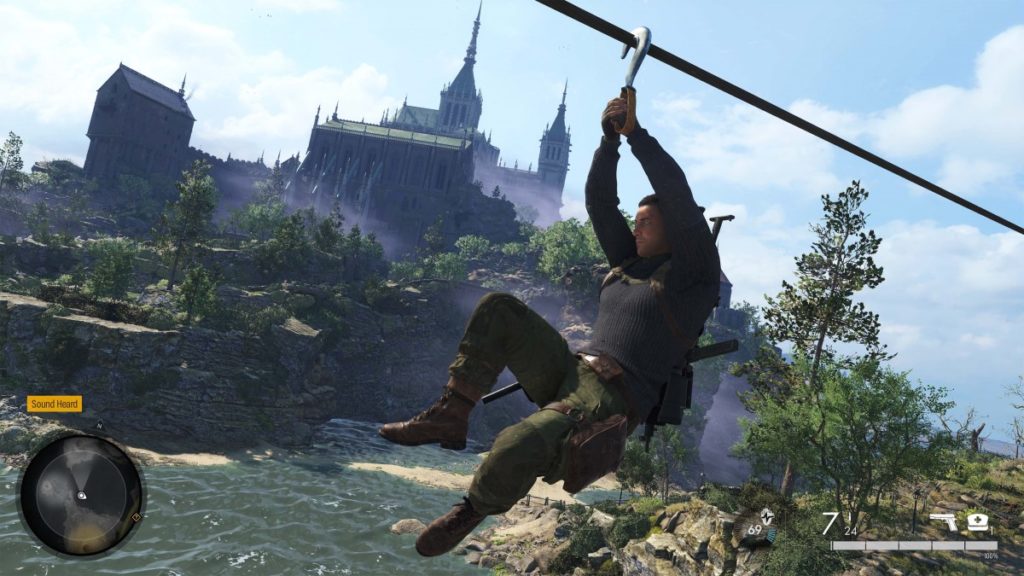
Cutely, the Resistance fighters continued their conversation after the cut-scene ended, with one in radio contact with a scout at the chateau who provided some further tips about how we could go about our mission. One characteristic of Sniper Elite games has always been that there’s no single-path way through each mission, and Sniper Elite 5 felt even more open-world than its predecessors. Armed with a detailed map and Fairburne’s super-powerful binoculars, we picked a likely-looking route, crouched into stealth mode (if you make Fairburne run when he is in stealth mode, he will drop back into a crouch automatically afterwards) and headed cautiously towards the chateau.
Soon we spotted two Nazi guards up ahead: the perfect opportunity to test the game’s sniping which, naturally, was as smooth and precise as ever. Running up to loot the bodies (and thereby replenish ammo, medkits, grenades and the like), we were met by close-quarters enemies who had heard the shots, and switched to the submachine gun to dispose of them. The ability to aim down the sights of all guns proved handy later, but mainly for the silenced handgun: it certainly made nailing headshot kills easier.
To the chateau
We carried on moving towards the chateau, trying to eliminate enemies with stealth takedowns as much as possible. The chateau itself was guarded by a dry moat, into which we descended, finding an armoury; after clearing it of enemies, we found a workbench. As Rebellion said, it offered a mind-boggling number of potential upgrades, but we didn’t have the resources (or, presumably, blueprints) required to enact any. But the workbenches should prove popular with players keen to create their ideal weaponry.
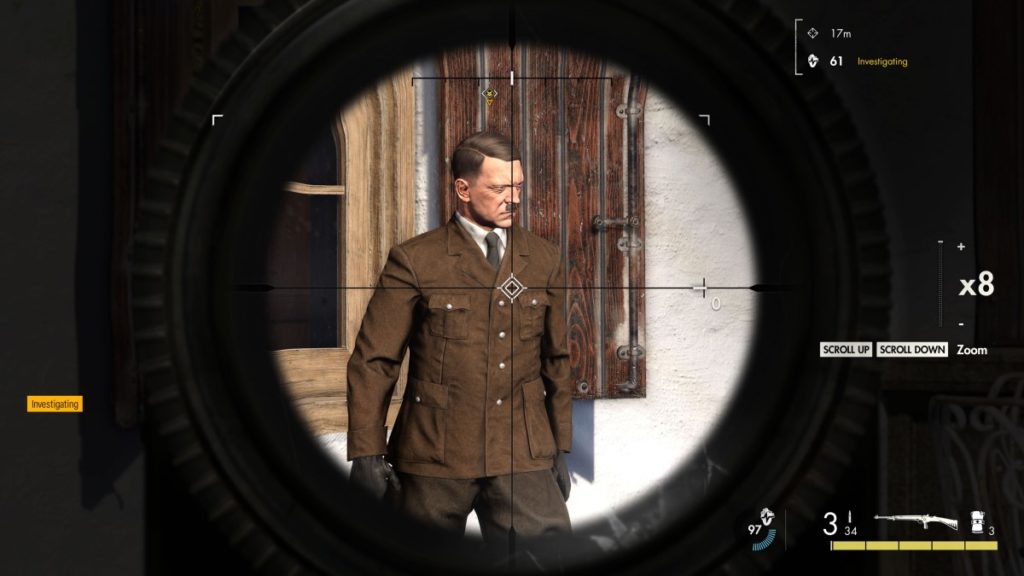
Next we were able to sample one of the new traversal mechanisms – climbing up a creeper from the bottom of the moat and into the chateau proper via a window. Inside the castle, some of the game’s engine improvements came to light: the 3D sound seemed helpfully precise, helping us to anticipate incoming enemies via their footsteps or the conversations they were having, and take them down stealthily.
And the chateau’s interior was impressive to behold, studded with the sort of period detail you would expect to find in a grand old French castle commandeered by the Nazis. Sniper Elite 5 is by far the best-looking game in the series so far: we were also impressed by its environmental design and the authentic-looking flora in the surrounding countryside.
A hint of puzzling
Before long, we found Moller’s office, but it was locked, and in attempting a lock-pick (a process which didn’t involve a mini-game but was lengthy), we were spotted by guards. Escaping to the upstairs attic, we found an alternative entry point via a hole in the floor. But something was amiss with Moller’s office: Fairburne couldn’t find the intel he sought, and concluded we were in an antechamber, and that the real office was concealed.
It was possible to interact with various objects, and soon we triggered a false wall to swing open. There we found the first dossier concerning Operation Kraken – a Nazi plan to stop the war before D-Day had even happened.
But before analysing it properly, we had to finish the mission by exfiltrating, from a specified point in the grounds away from the chateau. Descending to ground level, stealth was still required, and soon, alarms were ringing and we were swamped. Luckily, at least on the medium difficulty level, Sniper Elite 5’s checkpointing felt fairly forgiving.
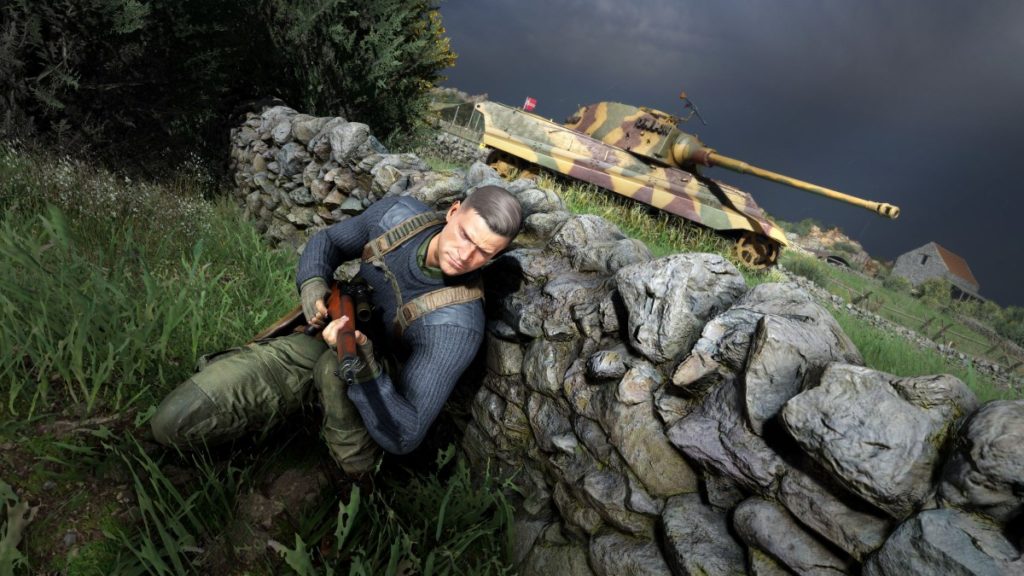
We also had a first chance to check out the game’s RPG-style skills tree – all our kills, takedowns and the like earned XP, and we eventually levelled up sufficiently to earn a skill point. The skills tree was split into three parts: Combat, Equipment and Body, and we chose the ability to use a medkit to revive Fairburne when he had been downed. Other Combat skills included the ability to throw back grenades, and various levels of automatic enemy-tagging.
In order to exfiltrate, we had to be free of enemy fire, and when we managed that, we were rewarded with an end-of-mission cut-scene, mainly featuring Moller vowing to hunt down Fairburne. We hadn’t used up our allotted time, so were able to replay the mission – this time taking a totally different route, encountering different enemies and finding a few more secrets and intel dossiers.
Rebellion’s aim to provide sandbox missions which you can approach in an infinite number of ways had clearly been successful – Sniper Elite 5 is a game with tons of replayability, and anyone who played a previous Sniper Elite game will testify that completing the missions swiftly becomes a secondary concern in comparison to finding absolutely everything in all the levels.
Sniper Elite with modern technology
Sniper Elite 5, then, isn’t some radical reworking of the franchise: it very much provides precisely the sort of gameplay – sniping, takedowns, third-person shooting and a modicum of puzzle-solving – that fans would expect.
Yet, primarily through engine improvements, and an added layer of attention to detail, it feels better than its predecessors in pretty much every department. That familiar gameplay has been honed to a fine degree, and not only does it look markedly better than its predecessors, it also feels startlingly authentic and believable, despite the entirely fictional storyline.
After a single-mission preview play-through, it’s impossible to say how well it will hang together as a game and how meaty the single-player campaign will be. But it is already possible to point out that it has a vast amount of replayability, and Rebellion has a great track record of keeping people involved in its games for long periods, via excellent DLC and compelling multiplay.
The existing fan-base will lap up Sniper Elite 5, and those new to the franchise should find that it offers a surprisingly sophisticated and rigorous mix of sniping and third-person action gameplay, within a meticulously researched and modelled backdrop of the Nazis’ last throes of French occupation. Like any Sniper Elite game, it isn’t rocket science, nor is it hugely original or innovative. But it’s enormously good fun to play, and that’s what matters.
